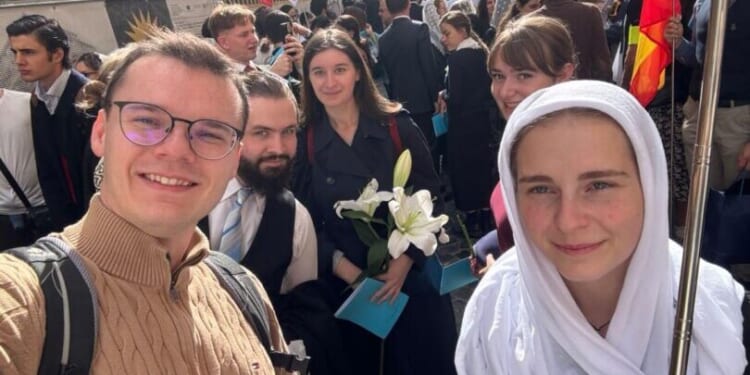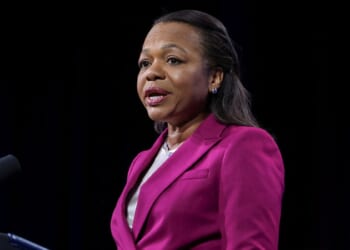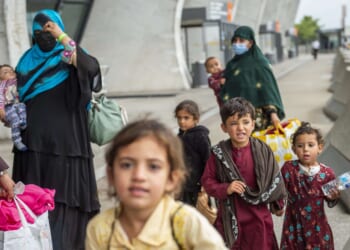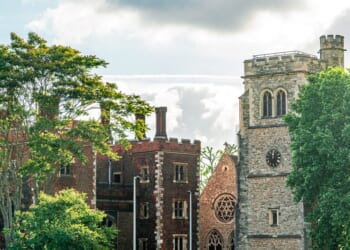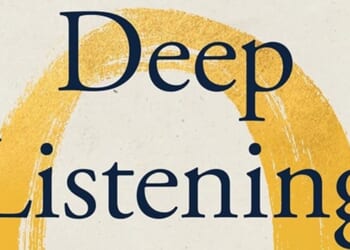ROME (LifeSiteNews) — As a multitude of pilgrims gathered on the southern bank of the Tiber facing the Bridge of the Holy Angels leading to Castel Sant’Angelo on the afternoon of October 25, it quickly became clear that an unexpectedly large number would attend this year’s Summorum Pontificum Pilgrimage. Heading toward St. Peter’s Basilica for the pilgrimage’s crescendo, they chanted the Litany of the Saints in the Church’s ancient tongue, their ranks swelling with every step.
LifeSiteNews interviewed a number of these pilgrims to survey their diverse array of stories, backgrounds, opinions, hopes and insights.
Flags from every corner of the globe – from Norway and Nigeria to South Korea and Brazil – waved high above the crowd as the procession entered St. Peter’s Square. Clergy and religious led the line into the basilica, but as their numbers surpassed expectations, the Vatican gendarmerie briefly faltered in their organization. The traditionalist pilgrimage had drawn such a vast crowd that most attendees were nearly barred from entering to worship at the very reason for their travels: a Pontifical High Traditional Latin Mass (TLM) at the Altar of the Chair in the mother Church of the Catholic world.
Vatican officials ultimately relented, though many pilgrims had to participate from afar. The Mass was celebrated by Cardinal Raymond Leo Burke, joined by priests from around the world and seminarians from the Institute of Christ the King Sovereign Priest. It concluded with Cardinal Ernest Simoni’s recitation of the long form of the Prayer to St. Michael, originally composed by Pope Leo XIII for exorcisms. Cardinal Simoni, an Albanian cleric, was arrested and tortured for his faith under his country’s communist regime.
The following day, as pilgrims dispersed across Rome to Latin Mass centers for the feast of Christ the King, the spirit of fraternity and devotion was unmistakable. At the Priestly Fraternity of St. Peter’s (FSSP) church of Santissima Trinità dei Pellegrini, the 11 a.m. High Mass was so crowded that many could not enter and priests ran out of consecrated hosts. Among the throng outside was Christine, a pilgrim from Uganda, speaking to LifeSiteNews with ecstatic enthusiasm.
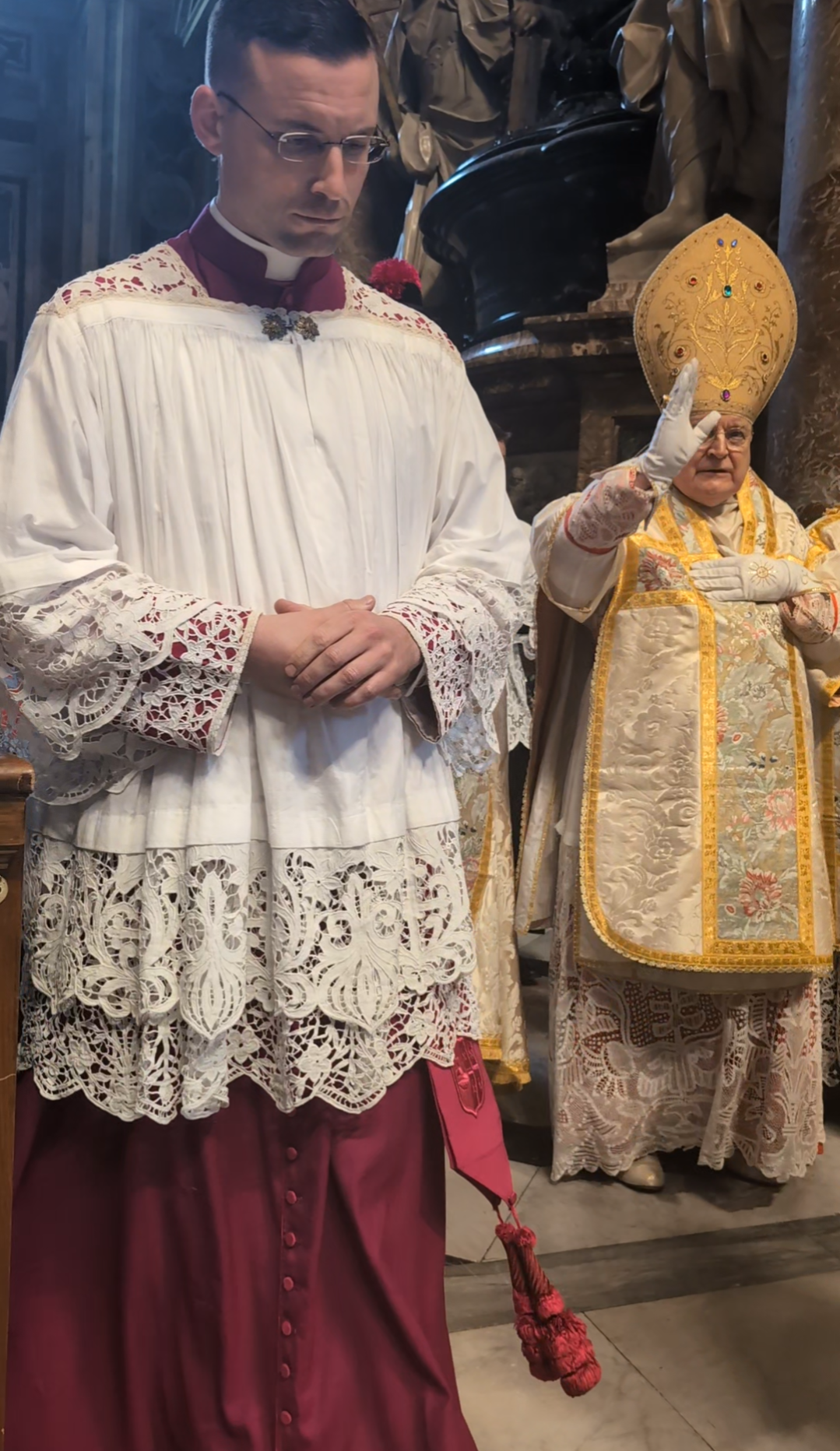
This was her second Summorum Pontificum Pilgrimage, made this year for her late father, who had died two months prior. Despite financial and personal difficulties, her gratitude was radiant. After attending the pilgrimage once before under Pope Francis, she was disheartened when the Pontifical High Mass in the basilica was discontinued. By the time she booked this year’s journey, it was uncertain whether the Mass would return.
“I was excited and looking forward to it. But as you know that had stopped the Mass in St. Peter’s.… Last month, I found out we were actually getting a pontifical Mass [in the Vatican], so as you can imagine I was super pumped about that. So I’m here now!” she said, smiling brightly.
Christine discovered the ancient rite only after encountering what she described as irreverence and heterodoxy in her local parishes after moving to Germany, where “a lot of things were contrary to the Catechism.” Her breaking point came when her parish, often rented out as a secular venue, hosted a gallery viewing during Mass, distracting the faithful even at the moment of consecration.
Searching online for alternatives, she found a community celebrating the Traditional Latin Mass. “At that point I could speak little German and definitely no Latin,” she said. “I could not comprehend anything that was happening, but I was there! And it could have been the chant, or God seeking me out, but I came out like ‘wow, what a beauty.’”
“And I haven’t stopped since,” she added.
READ: I witnessed hope and humor at the 2025 Summorum Pontificum Pilgrimage
A lifelong Catholic, she said that only through the TLM did she truly “discover” the Mass and its sacred rubrics.
From another continent came Giuliano Nader, 35, who works in regional politics, making his first pilgrimage. “This pilgrimage shows the traditional Church is still alive and still exists,” he said.
Giuliano believes the initiative demonstrates the TLM’s power to attract young Catholics and unite them from every corner of the world in Rome, “to be with the Pope.” In his view, “young people don’t have a lot of ways to be Catholic,” as diluted parish life often fails to nourish their faith. “When they discover tradition,” he explained, “they discover what St. Thomas Aquinas calls the via pulchritudinis, or way of beauty. It brings people in.”
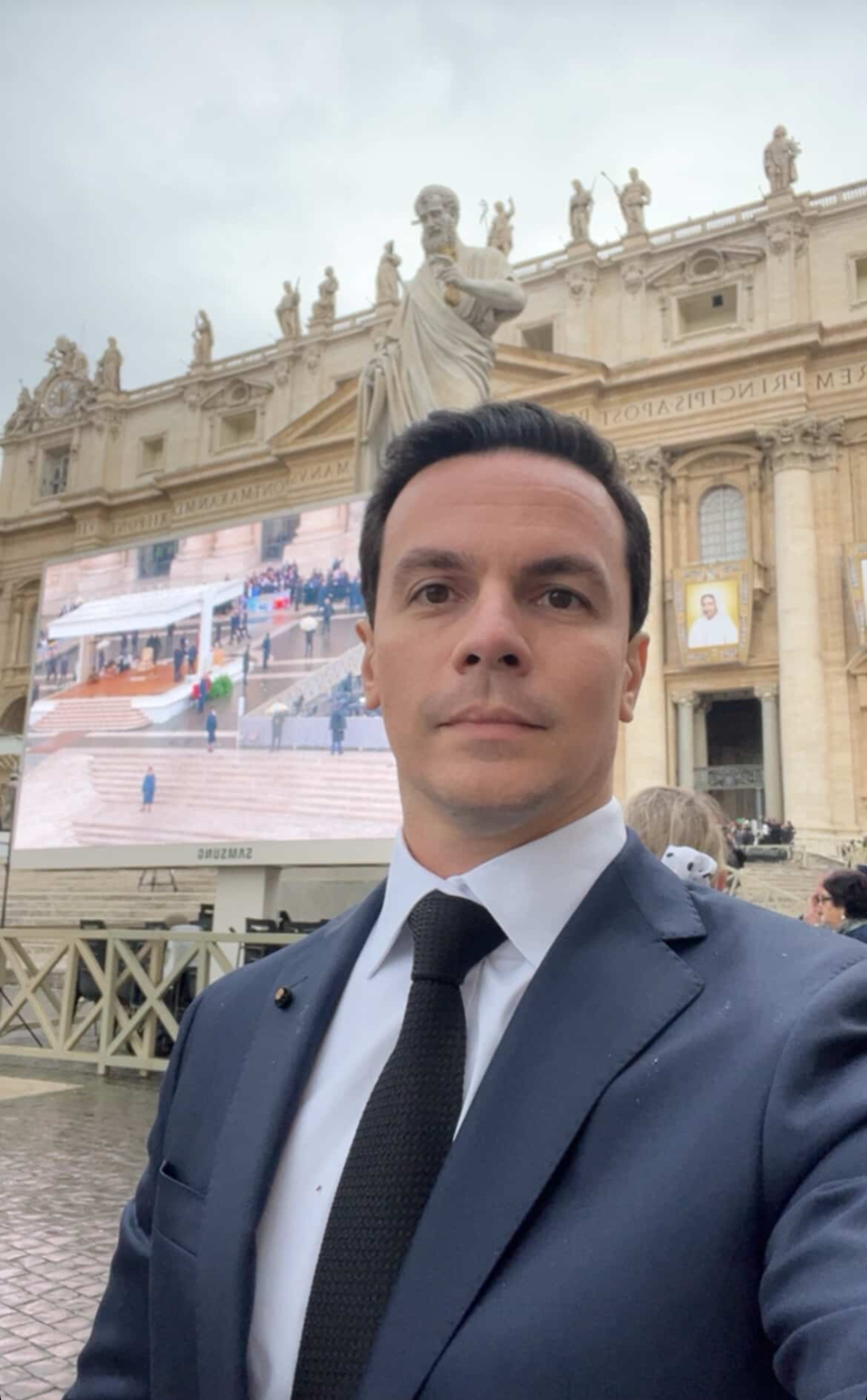
Two young German-speaking pilgrims, Tobias Laßmann, 25, a graduate in electronics from Limburg in Hesse, and Eduardo, 17, a Spanish-German catechumen, echoed that sentiment.
“I really like the traditional Mass,” Tobias said. “I think you get a special feeling for the presence of God, the Holy Spirit. I feel I need it also. It’s such a special kind of spirituality you don’t get in our diocesan Mass.”
Eduardo, preparing for baptism, said the TLM transformed his life. “Before, I did a lot of bad things.… I lived my life without Christ. I did what I felt was right. [This Mass] changed my life. It’s really beautiful. There’s something hidden: a power.”
He added, “I’m very hopeful because of the new Pope,” and noted how the FSSP Mass that morning was “full of young people,” a fact he hoped Church leaders would recognize as a positive sign.
Beatrice Grant, 22, from London, shared similar joy. A revert to the Faith, this was her first pilgrimage and first visit to Rome. Receiving Communion from Cardinal Burke, she said, “was such a privilege.”
“The Mass itself was definitely the focal point of the entire pilgrimage,” she reflected, “even though seeing everyone in the procession was just in itself an incredible experience.”
“Just knowing that so many pilgrims had come from abroad to be here in Rome and to experience this was amazing.”
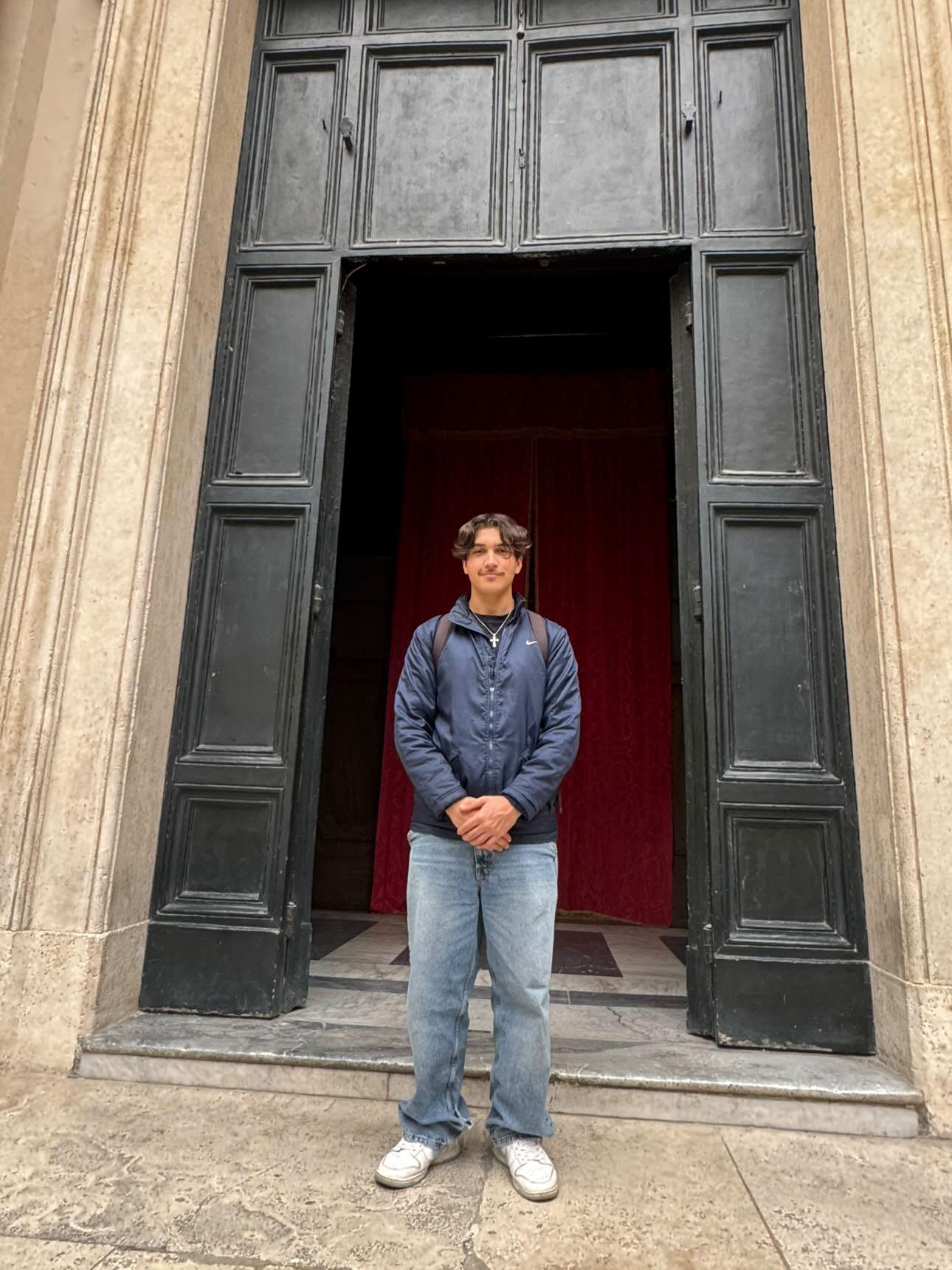
Looking to the future, Beatrice said: “I really hope that Pope Leo sees how many young people come to the pilgrimage – and how many people find it such a spiritual and edifying experience.” Fond of the new pontiff, she hopes he “lifts restrictions” and encourages traditional pilgrimages, which she believes are a sign of vitality.
Among the clerics present was Fr. João Silveira, a Portuguese priest and speaker at the Pax Liturgica conference the previous day. Once a lay organizer of the pilgrimage, Fr. João now travels as a missionary “especially to distant places” in cooperation with Church authorities “to help people have the Traditional Latin Mass.” A former chemical engineer and finance professional, he later pursued the priesthood.
He emphasized the pilgrimage’s meaning: “I think it’s important to say that this pilgrimage started as a way to show that we, the Traditional Latin Mass Catholics, are with Rome. We are Romans,” he said. “We are not outside the Church – and we’ll never be outside the Church.”
“So this is why it’s so important for this pilgrimage to come to Rome and not to another place.”
Fr. João noted that while in past years the pilgrimage drew around 800 to 1,000 pilgrims, “this year the numbers exploded,” with estimates between 3,000 and 5,000. The return of the Pontifical Mass, he believes, could herald continued growth.
“The Mass,” he said, “demonstrates that traditionalists firmly believe in the hierarchy of the Church. We are pilgrims to the tomb of St. Peter because we are always with the Pope… [with] all the hierarchy: the bishop, the bishops, the priests, the laymen.”
After years without the Vatican Mass, he concluded: “From now on I think it will always grow exponentially.”

The final word came from Peter D. Williams, director of the Family Education Trust in the U.K. A revert from New Atheism, he said that during his university years he “discovered the Church was right about one thing. And then another… and another… another…”
“By God’s grace I came back to the sacrament of confession,” he said.
Though an experienced professional, this was his first Summorum Pontificum Pilgrimage. “I don’t think I’ve been to [something like this] before and it’s been a lovely, lovely thing to be part of,” he said.
He described the experience as “to some extent also penitential” due to “queuing, waiting, standing, kneeling,” but found this fitting: “All of that it is great to offer up. So, the penitential element of a pilgrimage is there.”
Yet beyond sacrifice, he was moved by “the wonderful beauty of being able to enjoy these delicious spaces and the beauty of the old rite in its glory.”
The sacred setting, united with the liturgy it was built for, created “the space to pray” and “to be with Our Lord.”
Asked about his hopes for the future, Peter replied: “Well, it’s in God’s hands; within the providence of God. When you look at the traditional movement across the world, when you see how young it is, and how extensive it’s becoming … [despite restrictions] … I think this shows it’s the future.”

